|
AmCham plays a magnificent mine host

A lovely pair, Dr. Iain
Corness and Judy Benn, Executive Director of AmCham.
Dr. Iain Corness
The American Chamber of Commerce was the organizing host for the Joint
Chambers networking evening last Friday held at the Hilton in their Drift
Bar area, with Executive Director Judy Benn being omnipresent. With David
Nardone, President of Hemaraj Land and Development organizing the food, the
chamber members were treated to one of the best finger food displays at any
Joint Chambers networking. Not only carvery items, but even Peking Duck
rolls and other live cooking stations with BBQ seafood and even ribs on
offer. Well done, David, and the Hilton, under the watchful eye of Rudolf
Troestler, the Hilton GM.
In addition to the usual turn out of AmCham, the British Chamber of Commerce
(BCCT), the South African Chamber (SATCC) and the German Chamber (GTCC), the
gathering also included newcomers to the joint networking scene in the
Danish Chamber and the Belgian Chamber. In the absence of the Danish Thai
Chamber president, Danish Consul Stig Vagt-Andersen flew the Danish flag
with pride. Alain Deurwaerder, Vice President of the Belgian-Luxembourg/Thai
Chamber of Commerce was also enjoying the evening for his chamber.
The Chairman of the BCCT, Simon Matthews of Manpower, was present and had
another of his luridly patterned shirts covered in flowers - just where does
he find these? Another strong gathering was the Automotive Focus Group (AFG)
with President Frank Holzer, ex-president Mike Diamente, Richard Jackson and
Armin Walter obviously enjoying themselves.
Once again, the networking included many lovely ladies with business cards
at the ready with Nancy Ratanaliam and Suree Bunpluk (Bangkok Hospital
Pattaya), Eve Namkhammee (Hilton) and I just wish my name was Adam, Suvanee
and Thundra (Hemaraj) and Wannaphot Kaewpoung (Ruwac), Christine Zauner
(with husband Klaus, head of operations at SIG Combibloc), Rosanne Diamente
(Women With a Mission), and many more whose names I did not manage to
record.
Two big Aussies were Scott Finsten (Ocean Marina Harbormaster) and Matt
Fryar (Director of Operations Marriott Resort), seen chatting with many
members around the room, in the normal gregarious Aussie way. A newcomer was
Dennis Rose (MD at AAM) who has the Eureka Heat Recovery process allowing
for unlimited supply of hot water.
Other regulars included Ron Grigaras and his ex-boss Craig Donnelly, and
Paul McConnell (Deputy Head Secondary Regents International School) who did
not wear his kilt in shame following the No vote in the Scottish referendum,
Paul Wilkinson (Cooper International Engineering and Services) and Clive
Butcher (Highfield).
It had been a very successful networking, and the fact that I could not find
my car in the dreadfully confusing car park, stands witness to the fact that
I enjoyed it too.
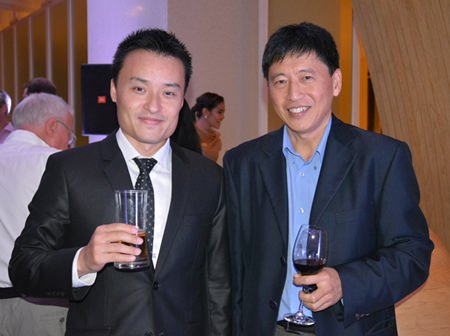
(L to R) Shutaro Tahara from JAC Recruitment
Chonburi office chats to Lim Cheng from Chevron.
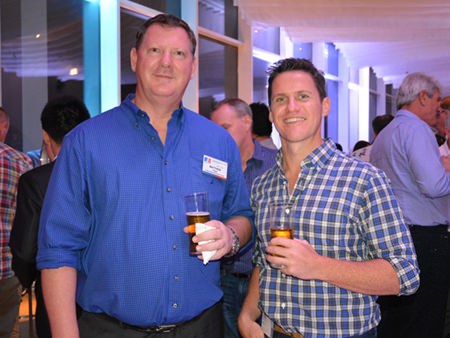
Pattaya Marriot’s Matthey Fryar (left) with Sam
McMahon VP Commercial & Finance Thailand of NS Bluescope (Thailand).
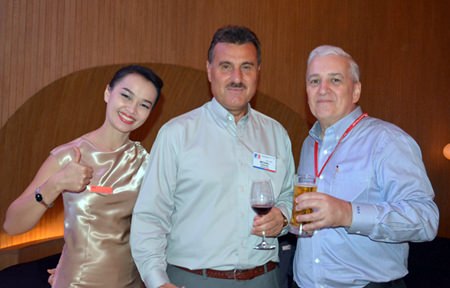
Michael Diamente (center) and David R. Nardone
poses for a photo with Hilton Hotel waitress Lilly (thumbs up).

(L to R) Hans Werner Vogt, Tobias Wimmer, Doris
Berger-Peters, Okko Sprey, Michael Berger, Elfi Seitz, Rudolf Tröstler and
Ruairidh Watters.
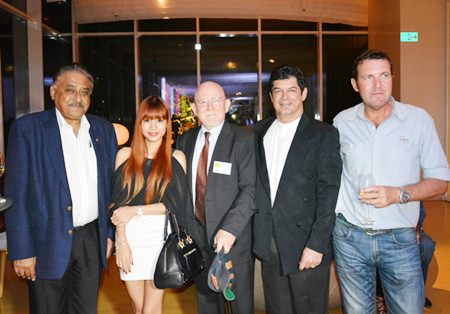
(L to R) Peter Malhotra, MD of the Pattaya Mail
Media Group, Wannaphot Kaewpoung, Marketing Executive of Ruwac Asia Limited,
Ron Smith, Director of S-3 Services, Bobby Brooks and Paul Gerard Wilkinson,
International Operations Manager of Cooper International Engineering &
Services Co., Ltd. (CIES).
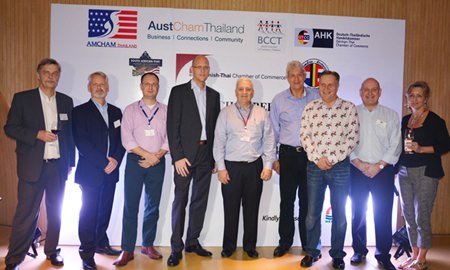
(L to R) Group photo of the directors,
representatives of chambers and sponsors of the night, Stig Vagt-Andersen,
Consul of the Danish Consulate, Alain Deurwaerder, VP of the
Belgian-Luxembourg/Thai Chamber of Commerce, Michael Berger, GM Intergest
Thailand, Rudolf Tröstler, GM of Hilton Pattaya, David R. Nardone, President
& CEO of Hemraj Land and Development, Leigh Scott Kemmis, President of the
AustCham, Simon Matthews, Chairman of the BCCT, Graham Macdonald, President
of the SATCC and Judy Benn, Executive Director of AmCham.

(L to R) Simon Matthews, Chairman of BCCT,
Graham Macdonald, President SATCC and Dr. Iain Corness.
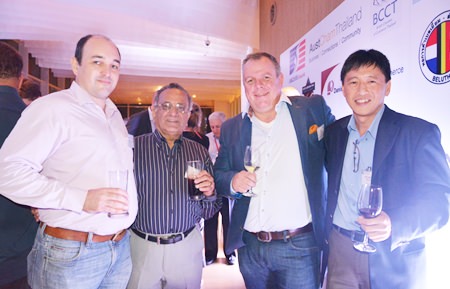
(L to R) Stefan Langhein, Sudhir Khanna, Mark
Huisman and Lim Cheng seen having a great time.

(L to R) Pichaya Nitikarn, PR Manager of the
Amari Pattaya, Michael Berger, GM of Intergest Thailand, Ruairidh Watters
and Kamolphop Suksamarn, Sales Manager of Nova Platinum Hotel.

(L to R) Okko Sprey from Plus Exploration, Chris
Van Der Merwe from Futuris Thailand and Damien Kerneis, from Geodis Wilson
Thailand on their second glass of drinks.
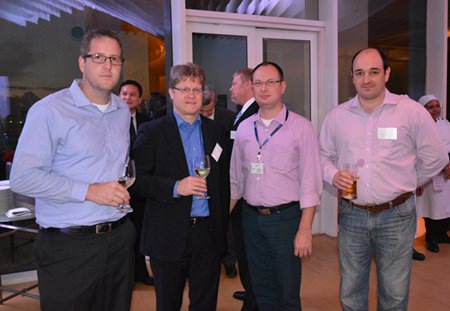
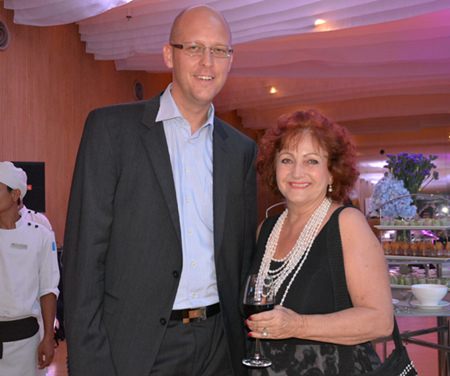
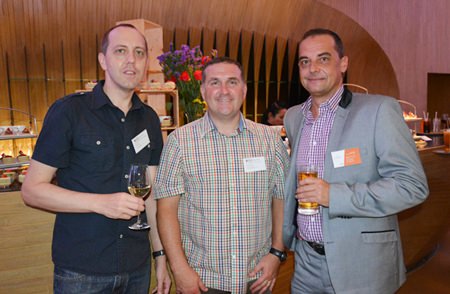
(L to R) Gary Russell, Paul McConnell from
Regents International School and Keith Ellis, Sales Director of Atalian
Global Services.
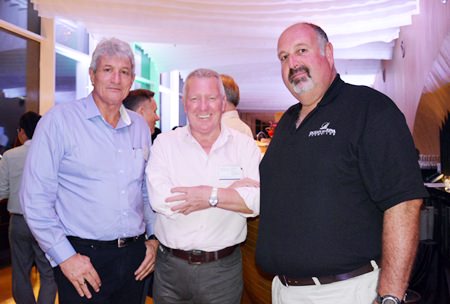
(L to R) Leigh Scott Kemmis, President of the
AustCham, Brian Chapman, Associate Wealth Consultant Devere Group Thailand
and Scott Finsten, Harbor Master of the Ocean Marina Yacht Club.

Rosanne Diamente from WWM poses for a photo with
Regents International School Pattaya’s Principal Iain Blaikie, and School
Bursar Kirsty Paiboontanasin.
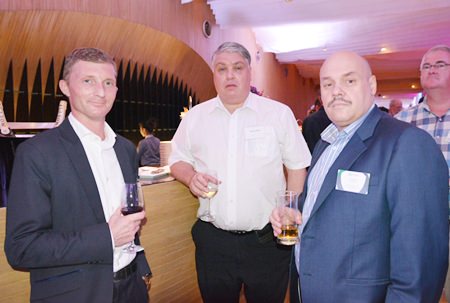
(L to R) Jesper Kjaerskov Pedersen from G4S
Secure Solutions (Thailand) Limited, Mike Walls from Oncam Grandeye and
Harry Stultiens from Vinarco International.

|

|
Ebola outbreak bigger than ever
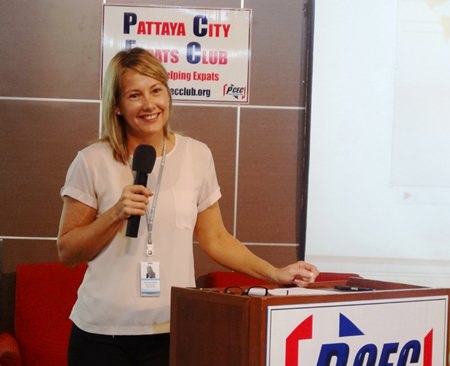
Jenny Lee Walsh, a Consultant in
Nursing Service from Bangkok Hospital Pattaya, speaks to the PCEC about the
latest Ebola outbreak in Africa. She gave a brief history of past outbreaks and
explained why the latest is the most significant.
The current Ebola outbreak is ten times bigger than past
outbreaks and still growing. Ms. Jenny Lee Walsh, a Consultant in Nursing
Service from Bangkok Hospital Pattaya spoke to the Pattaya City Expats Club last
on Sunday, September 14 about the latest outbreak.
Jenny explained that Ebola is a disease of humans and other primates. There are
five sub types of the Ebola virus, four of which are found in humans. The virus
sometimes mutates a little in each infected person, making it hard to treat.
Further, the virus produces a haemorrhagic (or inflammatory) response which
leads to the rupture of blood vessels. She mentioned that every virus has a
host, a reservoir, where it can live without infecting the host; for the Ebola
virus it is still unknown, but evidence suggests it is most likely the fruit
bat.
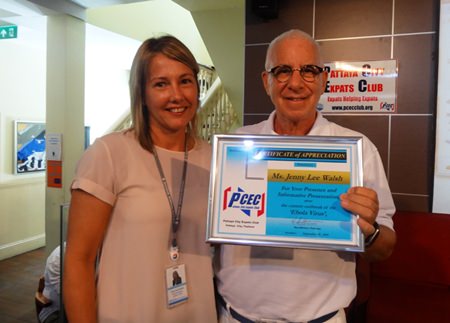
PCEC MC Richard Silverberg
presents a Certificate of Appreciation to Jenny Lee Walsh for her informative
talk about the latest Ebola outbreak and the efforts being undertaken to
restrict the spread of this virus.
The incubation period for the Ebola virus is 2 to 21 days
from exposure, meaning it can take up to 21 days before a person starts showing
symptoms. In most cases, however, symptoms show up by Day 10. The first symptoms
resemble those of the flu: headache, sore throat, muscle aches, etc. Then, other
symptoms appear, such as chest pains, red eyes, loss of appetite, diarrhea, skin
rashes, and difficulty breathing and swallowing.
Jenny provided information on the first outbreak in 1976 in Africa and
subsequent outbreaks. These outbreaks were in local villages and died out after
infecting a few hundred people. The 2014 outbreak is believed to have started in
December 2013 when a two-year-old boy in Guinea died, possibly after being
bitten by a bat. The boy’s mother, older sister and grandmother became
symptomatic and also died, as did a nurse and the village midwife. The virus
spread to other villages, and then to neighbouring countries Liberia and Sierra
Leone. As of mid-September, there were just over 4,000 cases suspected or
confirmed in West Africa; the mortality rate stood at 53%. Jenny said that the
reported caseload is understated because people are reluctant to report; there
is a general distrust of governments and hospitals; and there is limited access
to laboratories for testing.
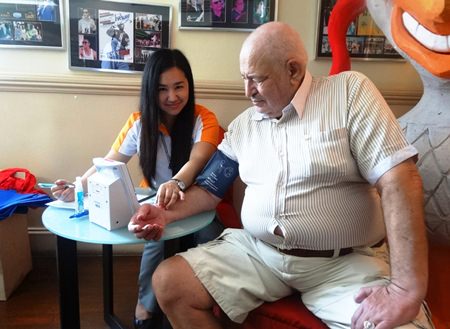
A nurse from Bangkok Hospital
Pattaya provided free blood pressure checks to members and guests at the Sunday,
September 14 meeting of the PCEC.
Fourteen of Liberia’s 15 counties have now reported confirmed
cases. As soon as a new Ebola treatment facility is opened, Jenny said, it
immediately fills to overflowing with patients. At least 152 health care workers
have been infected and 79 have died. When the outbreak began, Liberia had only
one doctor to treat every 100,000 people in a total population of 4.4 million
people. Every infection or death of a doctor or nurse significantly depletes
response capacity.
Jenny said that the demands of the Ebola outbreak have completely outstripped
the capacity to respond. Among the challenges: lack of space in treatment
centres (the centres have become end of life care facilities); lack of
protective gear; lack of running water; the isolation centres are overwhelmed
(including not having enough food); riots are breaking out (partially due to the
fact that the quarantine time is three weeks); and there is a lack of community
engagement.
One worrying aspect of the latest outbreak is that cases have been recorded in
cities, Jenny said. Previous outbreaks were confined to rural areas. Another
concern is that the rate of reported infections is increasing.
Ebola is not highly contagious. It is not an airborne disease like, for example,
the avian flu. A person can contract Ebola directly from a fruit bat, for
example, being bitten or eating a soup in which fruit bats was one of the
ingredients or by eating an animal that is infected. Jenny said that the Ebola
virus can spread from person to person usually only through direct contact with
body fluids. The virus can also be spread indirectly through contaminated
objects such as needles.
Burial ceremonies where mourners wash the body of the deceased and have direct
contact with the body of the deceased person - quite common in African culture
and in the Muslim religion - can also play a role in the transmission of Ebola,
Jenny explained. In these cases, the virus will usually enter the body of the
mourner through a cut in the skin or a mucous membrane.
There is no specific treatment and no cure. The best treatment is to manage the
symptoms, ensure that the patient is well hydrated, and provide supportive care.
The earlier a case is detected, the better the chances of survival. The key is
to avoid having the patient go into shock due to a lack of fluids. At the
community level, the best strategy is to isolate known patients, trace contacts,
identify the source person and conduct community awareness and education
campaigns.
There are vaccines under development; the process of testing them to prove that
they are safe is being rushed given the current circumstances. If the vaccines
are proven safe, Jenny believes that the priority will be given to health care
workers.
The global community has been slow to respond. It was not until last month that
the World Health Organization (WHO) declared the Ebola outbreak to be a public
health emergency of international concern. The goal of WHO is to limit the
spread in countries that have experienced outbreaks, and prevent the spread to
other countries. Exit screenings have been set up at international airports,
seaports and land crossings in the countries that have outbreaks. Travellers
arriving in other countries with an unexplained febrile illness are being
isolated and tested.
After Jenny concluded her presentation, Master of Ceremonies Richard Silverberg
brought everyone up to date on upcoming events and called on Roy Albiston to
conduct the always informative Open Forum where questions are asked and answered
about Expat living in Thailand, especially Pattaya.
For more information on the PCEC’s many activities, visit their website at
www.pcecclub.org.
|

|
|

